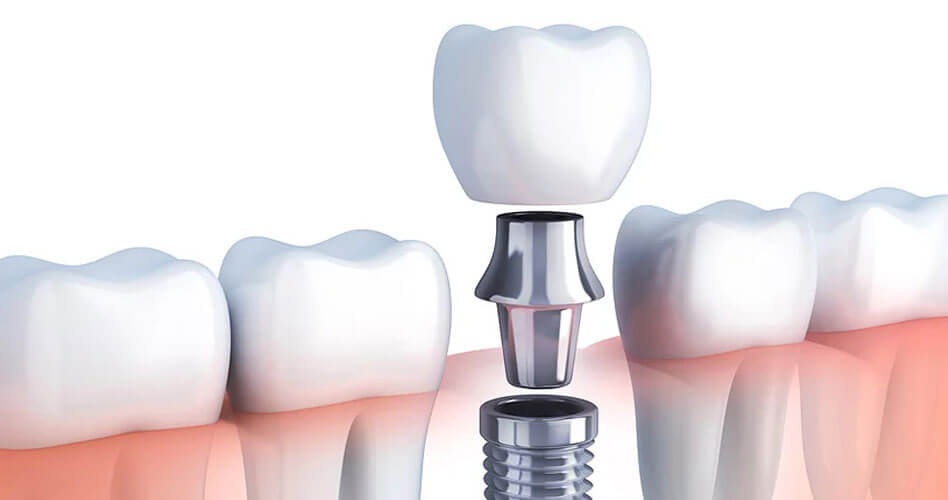A dental implant is a titanium screw implanted into your jawbone, which acts as an anchor for a tooth replacement.
It can fuse to the bone in a process called osseointegration. Finally, an “abutment” attaches to the implant, which holds an artificial tooth or dental crown in place. It is a wonderful treatment that can increase the quality of life.
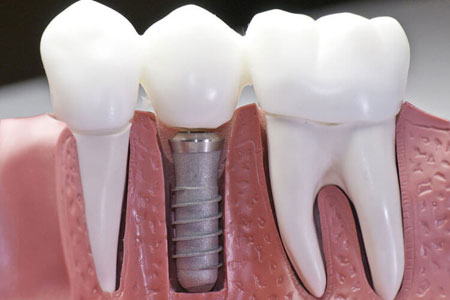
After your dental implant has osseointegrated into the jawbone, you will be ready for St. Lawrence Dentistry to place a crown that sits atop a dental implant. An intimate understanding of the engineering of the implant materials is critical for success. A tiny screw holds an implant abutment to the dental implant, and the relative torque values must be known when fastening the screw. Each type of restorative screw has different torque values, and the manufacturer’s specifications must be followed to torque the implant abutment into place. Too little torque can mean the screw could come loose, and too high a torque could mean separation of the screw head from its body and potentially with the implant fixture itself. Rest assured, St. Lawrence Dentistry knows all the “ins” and “outs” and can deliver the best implant treatment to its Mississauga patients.

The base an implant crown sits on is called the abutment. A stock abutment is a “one size” connector piece sold by an implant manufacturer, whereas the “custom abutment” is custom-made by our dental lab. The main problem with stock abutments is that it’s difficult to control the cement line, leading to peri-implantitis. The characterization of peri-implantitis is inflammation around a dental implant. In addition, stock abutments correlate with a higher incidence of bone loss and implant failure. At St. Lawrence Dentistry, we often use precision custom abutments made by the Oakville-based Solaris Dental Lab.
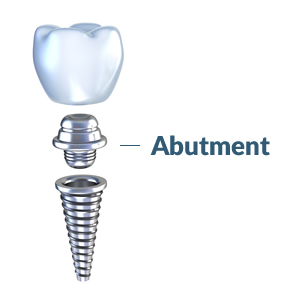
The advantages of stock abutments are that they are less expensive and have an easy impression technique from an analog (legacy way of taking a dental mold) standpoint. However, this advantage evaporates if the dentist uses a digital scanner like our Mississauga dental office. In addition, the only way to correct angulation issues (if implant placement is at an off-angle) with a stock abutment is to “prepare it”, I don’t recommend this, and our clinic strongly encourages the shift of dentistry away from using stock abutments to custom abutments. There are so many advantages to custom abutments that it is unreal.
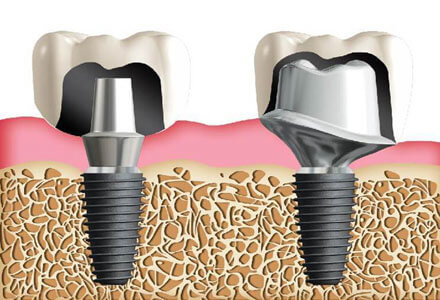
The advantages of custom abutments are that they provide the following:
- Superior contours of soft tissue and emergence profile
- Reduce the risk of cement issues
- Excellent fit of dental crowns to the abutment and better retention due to more surface area of custom abutments
- Ability to precisely correct angulation
- Less use and expense of precious metals
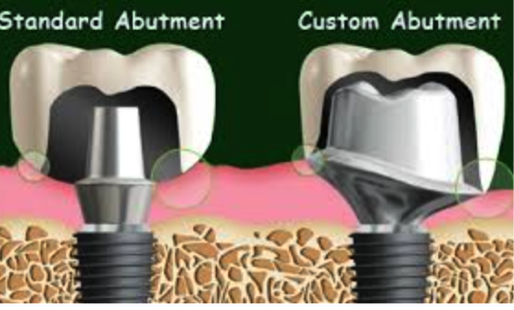
When we get into custom abutments, we have several subset types, including Titanium abutments and zirconia abutments. The advantage of Titanium abutments is strength, and the disadvantage is color. They are suitable for PFM and zirconia-based crowns. However, they are not acceptable if the crown it’s translucent because the grey will show through. Zirconia’s abutment advantages are color, and the disadvantage is strength. Nevertheless, they can be helpful when using glass ceramics such as Emax.
To learn more about Emax dental crowns, please visit us here:
Differences Between Zirconia, Emax, And Ceramic Hybrid Dental Crowns
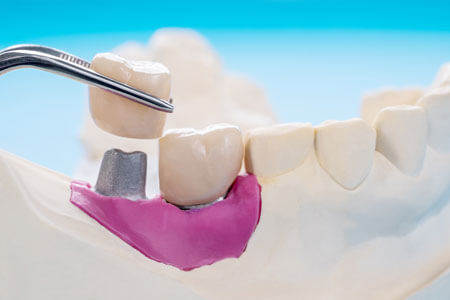
Dr. Hawryluk tries to limit the use of zirconia abutments. We know zirconia is solid, but it is also very brittle. The last sound we want to hear when we are torquing a zirconia abutment is a “crack”, indicating failure at the abutment-implant interface. The other problem is zirconia abutments is they can be detrimental to the titanium implants. If you have to remove the zirconia abutment, there is a small chance that it can abrade or warp the ‘internal hex’ of an implant and render the implant non-restorable. St. Lawrence Dentistry does use them, though, if we are planning an all-ceramic crown, as zirconia abutments provide a better aesthetic result than metal abutments in this circumstance.
St. Lawrence Dentistry tries to limit the use of zirconia abutments. We know zirconia is solid, but it is also very brittle. The last sound we want to hear when we are torquing a zirconia abutment is a “crack”, indicating failure at the abutment-implant interface. The other problem is that zirconia abutments can be detrimental to titanium implants. If you have to remove the zirconia abutment, there is a small chance that it can abrade or warp the “internal hex” of an implant and render it non-restorable. St. Lawrence Dentistry does use them, though, if we are planning an all-ceramic crown, as zirconia abutments provide a better aesthetic result than metal abutments in this circumstance.
https://images.app.goo.gl/KZ2F7pWUPEabAVGG8
Another class of abutments is Titanium base abutments, which have an outer portion of zirconia, which blocks the titanium base. It must be luted appropriately to the titanium base (with adhesive resin cement). The advantage of these abutments is color; the disadvantage is strength (compared to all titanium abutments) and luting strength. They are great for zirconias and glass restorations. Strength and reliability are significantly higher for the Titanium base abutments than the pure zirconia abutments.
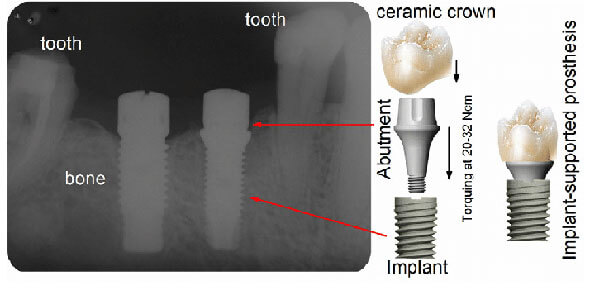
In some instances, an implant is significantly below the gum line, and the abutment extends to the implant with a metal collar. In these cases, there is a high likelihood of the abutment color showing through the gingival (gum) tissues — especially if there is a thin tissue biotype. The Ti base abutment circumvents the dilemma of choosing metal or titanium — we “can get away” with a thin gingival (gum) biotype (we won’t have a grey hue through the tissue, which would be the case with a traditional Ti abutment). Additionally, we can use this with glass-ceramic restorations and appropriately block out the metal base.

The emergence profile is the shape of the connector abutment between the implant and crown. The emergence profile is critical and something you cannot predictably control with a stock abutment. However, with a custom abutment, there is no reason why you cannot get a complete anatomical emergence profile that will allow for a more aesthetic restoration. One of the issues we can encounter when we sit more anatomically correct abutments is a little tissue resistance. Therefore, we will anesthetize the surrounding tissue to place the abutment entirely in these cases. We love when we can give our Mississauga dental patients the advantages of custom implant abutment.
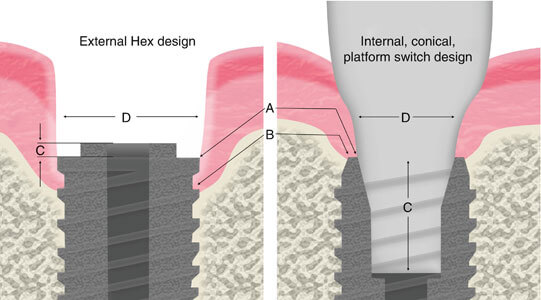
A screw-retained crown is one where both the crown and implant screw into the implant. In a cement-retained implant crown, the abutment still screws into the implant. However, the crown and abutment adhere together by cementation. Digitally both options are available for impression-taking and virtual designing. We mention digital because St. Lawrence Dentistry is a digital office. One of the main advantages of screw-retained restorations is the ease of retrievability- this allows us to clean around the implant or replace or re-torque the screw. Another advantage is we can use strew retained crowns in situations with limited interocclusal distance (distance between upper and lower teeth). Screw-retained crowns also don’t have cement irritation at the restoration-abutment interface.
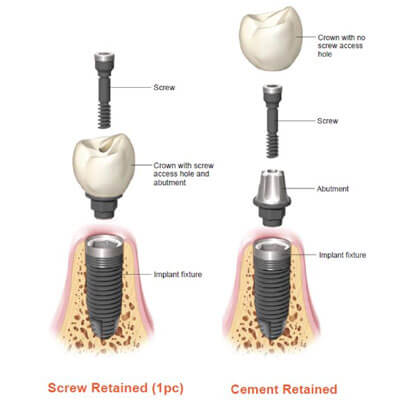
A dental implant bridge is when we place two implants to fill a three-teeth space. When we plan a dental implant bridge, I feel that a “screw-retained” is best when possible. However, we must be careful with these as the implant placement as part of a bridge must be almost entirely parallel. Otherwise, the bridge will not be able to be seated passively. I recommend “non-engaging” abutments for screw-retained implant bridges, and we always have the lab verify “the draw”. These lack internal hex features and allow for a little “wiggle room” if the implants are slightly off-angulation. The disadvantages of screw-retained implant crowns are the screw access hole is often visible, hampering the esthetics. However, the access hole is hardly visible when we use modern Emax crowns. In addition, screw-retained crowns are not always possible due to implant angulation – particularly in the anterior region (front teeth).
To learn more about implant-based dental bridges, please visit us here:
Digital Technology Facilitates Dental Implant Bridge Fabrication
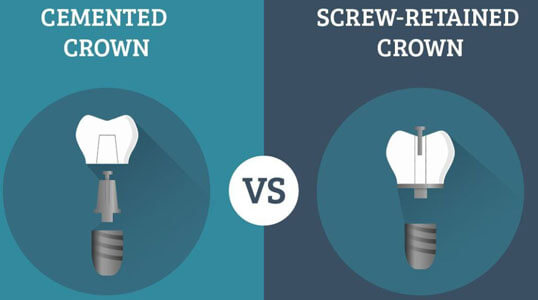
Cement retained implant restorations have their own set of advantages. Their shape can be independent of implant angulation, enhancing the aesthetics. No screw access hole is present, and the implant restoration is a passive fit. The disadvantages of cement-retained implant crowns relate more to stock abutments, namely controlling dental cement. If the “cement line” is below the gum line, it can lead to bone loss. In addition, the crown is not retrievable without destroying the crown. Sometimes crown retention can be an issue if the abutment is short.
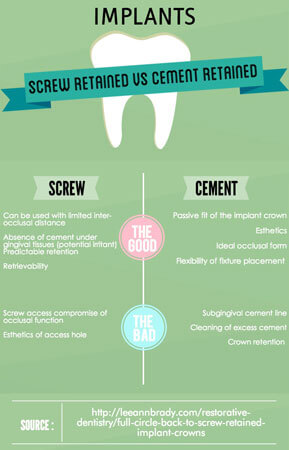
In closing, implants have become such a vital treatment modality that the treatment planning, acceptance, and placement rates have increased. We hope you have enjoyed this article, and feel free to ask us questions when you are in our Mississauga office.
Reference:
Restorative Implantology: Putting the pieces together after placement. Viva Learning: 2020)
- St. Lawrence Dentistry Looks Forward To St. Patrick’s Day! - March 12, 2025
- Understanding Dental X-Rays and Radiation: What You Should Know - January 13, 2025
- Happy New Year from St. Lawrence Dentistry! - December 30, 2024



